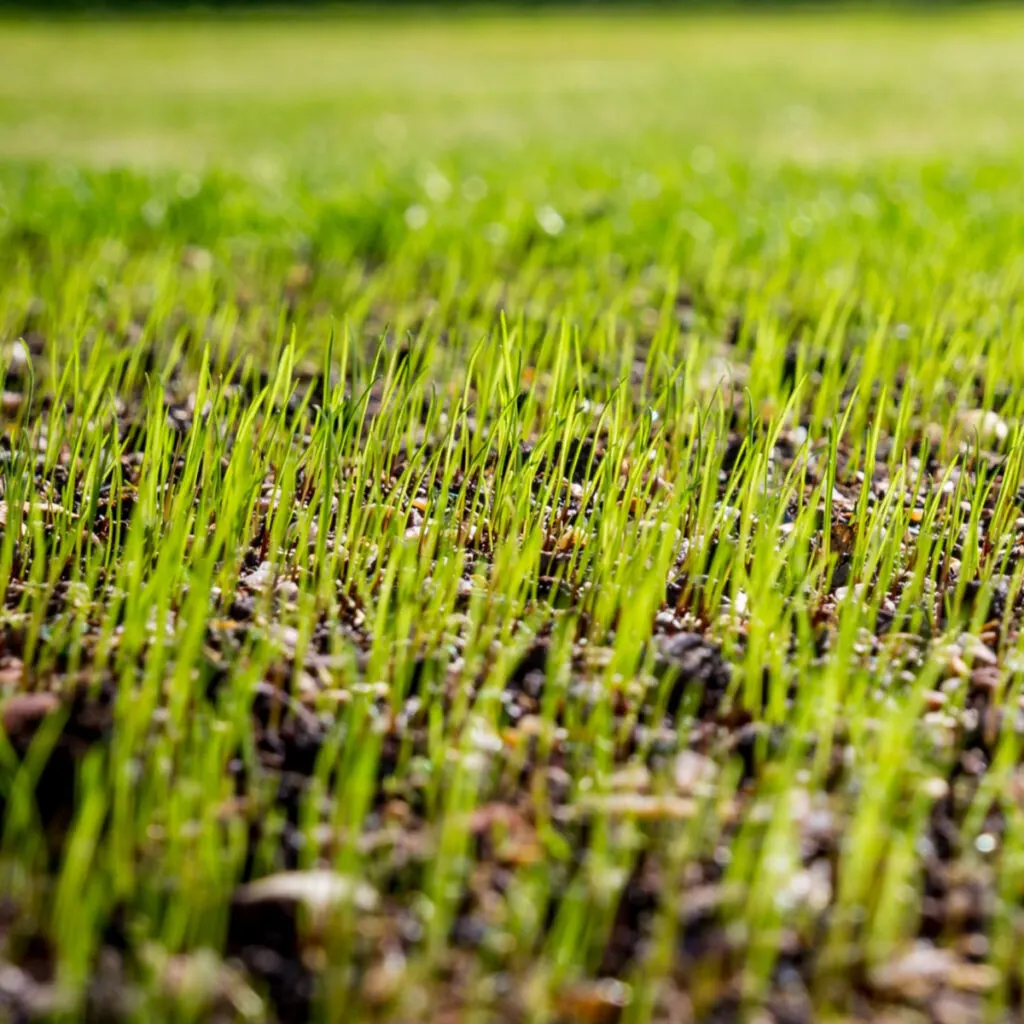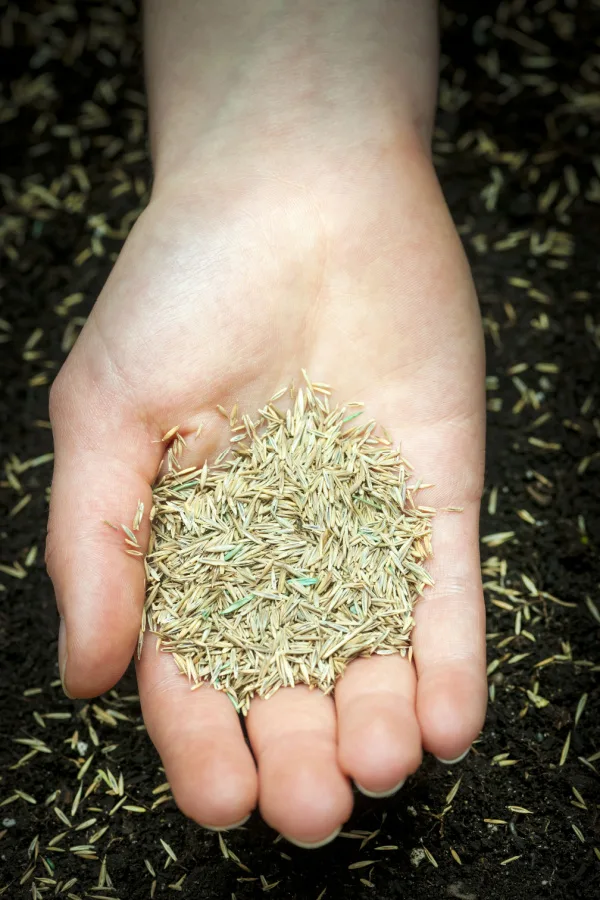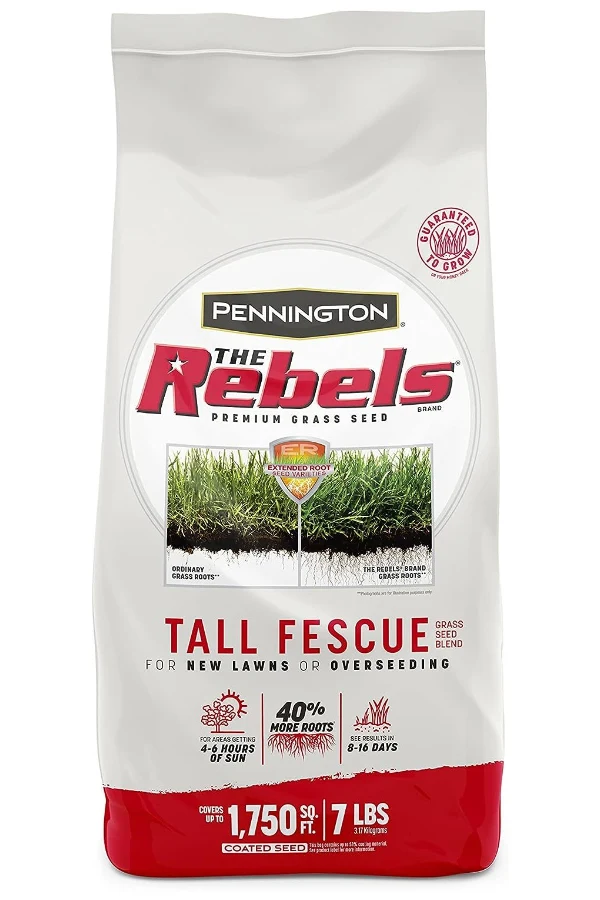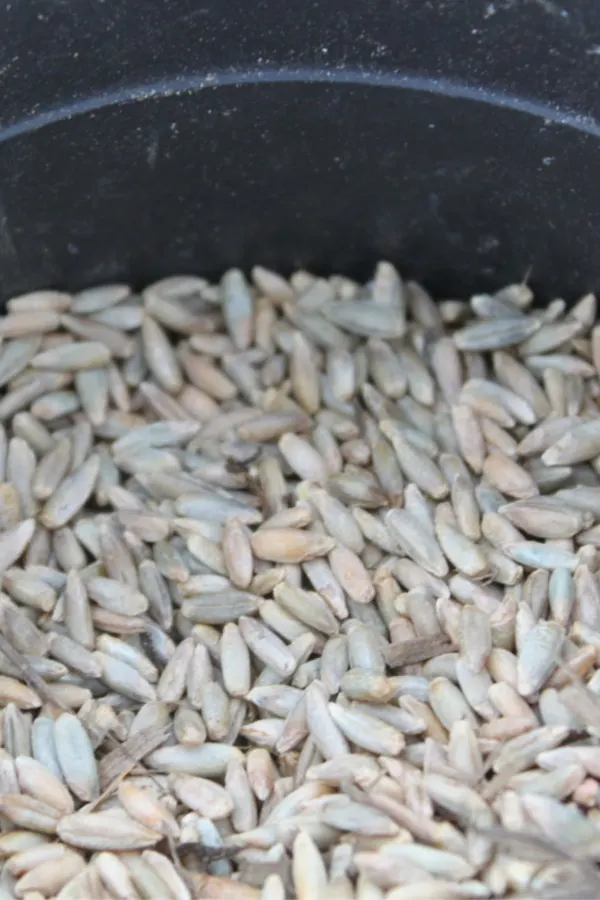Tired of planting grass seed over and over and not having it grow thick, lush and full – or having it take forever to fill in?
Whether trying to seed a whole new lawn or simply fill in a few bare spots, planting and getting grass seed to grow can be a frustrating process for many. And it certainly doesn’t help that there are so many choices and decisions to make when it comes to seeding.
Whats the best seed to purchase? How thick should I spread the seed? Do I need to fertilize? How often should I be watering? All of these questions and hundreds more cross the mind of those trying to get grass seed to grow in their lawn.

The answers to all of the above questions are certainly important when it comes to getting grass seed to take hold. Choosing the right seed for your area is a must. As is putting the seed down thick enough, giving it a bit of fertilizer and watering it consistently.
But in addition to all of those factors, there is one more little planting secret that can really help your grass seed fill in and take hold like never before. It’s one we stumbled upon a few years back at our farm – and it has truly made growing new grass from seed a breeze for us.
How To Get Grass Seed To Grow – The Basics
Before we get to the helpful little trick, it goes without saying that to get grass seed to take, there are a few “must-haves” right from the start. Unfortunately, with or without a secret trick or tip, if you don’t have the “must-haves” – the grass is not going to grow well.

The “Must-Haves” Of Getting Grass To Grow
First and foremost, starting with a high quality seed mix is a must. As is selecting a seed mix that is suitable to grow in your area.
A warm season grass will not grow well in a cooler climate. And a cool season grass will not grow or hold up well in a warm season climate. No matter how much you water or fertilize – if you start with the wrong seed, your lawn will nor hold up or perform well.
The Importance Of Using Blended Grass Seed – How To Get Grass Seed To Grow Thick
In addition to selecting a good seed that is well-suited for your location, it is also vital to select a blend of grass seed versus a single type of seed. A great example of this is Kentucky Bluegrass seed.
Many consider Kentucky Bluegrass to be one of the best when it comes to creating a beautiful lawn. But entirely on its own, Kentucky Blue is hard to grow and maintain. And without constant attention, it can and will fail quickly.

Kentucky Bluegrass has very shallow roots. When a field is planted entirely in Kentucky Blue, it has a hard time handling heat of any prolonged nature. With shallow roots everywhere, there is nothing to help protect it. In addition, it is also more susceptible to disease. Especially when it is the only variety of grass growing in the lawn.
The Power Of Grass Seed Blends
Much like with vegetables in a garden, if you only grow one variety of one crop, it is an invitation for trouble. Why? Because pests and disease have no resistance once they take hold.
Grass seed and lawns run on that same exact principal. When planted with a mix of fescue seed, Kentucky Blue grass can not only survive, but thrive. The longer blades and roots of the fescue help provide shade and strength to the Kentucky Blue seed. Likewise, the fescue benefits from having the Kentucky Blue.
For years, we have used Pennington’s Tall Fescue Seed Blend for all of our seeding. One thing is for sure, it really has made all the difference by using a higher quality seed. There are also plenty of other great seed mixes on the market, but the key is to definitely use a blend versus a single grass seed – and to make sure it is good for your area. Affiliate Product Link: Pennington Seed
So now that we know the must-haves to getting grass seed to grow – let’s take a look at that planting secret that can have your grass seed filling in thick and lush in no time at all!

Planting Seed With Annual Rye – The Game Changer!
We are often asked if we learned our little grass growing trick by intense research and experimenting. We always laugh and answer that it was honestly a complete accident. But an accident that worked like a charm!
A few years back, we were re-seeding a patch of lawn that had been excavated from a concrete project. We raked out the dirt as usual and I went to the garden shed to find our grass seed.
Sitting beside our fescue seed mix was a partial bag of annual (cereal) rye seed. It had been left over from planting our cover crop in the garden, and since it was already going on two years old, on a whim, I decided to throw what was left in with the grass seed.
I figured if nothing else, it might germinate and cover the soil faster while the actual grass seed came up. It was a better option than simply throwing the seed out. Or, as can often happen, mice finding it over the winter.
The Annual Rye Mistake – How To Get Grass Seed To Grow Thick
But as it turns out, planting that annual rye along with our regular grass seed was the best thing we ever did. Rye germinates quick, especially in the warm soil of early fall. And by sprouting quickly, it helped provide instant cover for the fescue seed mix.

As the rye took hold, the fescue came up in between thick and lush. No weeds developed because the rye helped cover the bare soil quickly. Even better, the rye’s roots helped to break up the soil below making it easier for the fescue to take hold. It also helped retain moisture and provide cooling shade as the seed grew.
In addition to all of those benefits, annual rye happens to be one of the few crops that can help fix nitrogen levels in the soil. And that means more nutrients are available for the grass seed to take in as it grows. A true win-win! Product Affiliate Link: Annual Rye Seed
The Grass Seed Takes Over – How To Get Grass Seed To Grow
As annual rye will do, it began to die off after we mowed it a few times. As it did, the fescue continued to take hold and thicken in. It is a process we now use no matter if seeding a small patch or an entire section of our lawn. And it works without fail.
In fact, with the addition of a new pond and pavilion area at the farm, we had to excavate and level off a large field and replant nearly 3 acres of grass – and as you can see from the photo below – it has all come in extremely well. And what is really amazing is the grass seed was planted just this past spring!
Over the years, we have found a ratio of (4) parts grass seed to (1) part annual rye to be the best blend. One thing is for sure – it has all but eliminated us from ever having to re-seed the same area again!
Here is to growing grass seed like never before – and having it come in thick and full faster than ever. Happy Gardening! – Jim and Mary.
Jim and Mary Competti have been writing gardening, DIY and recipe articles and books for over 15 years from their 46 acre Ohio farm. The two are frequent speakers on all things gardening and love to travel in their spare time.
As always, feel free to email us at thefarm@owgarden.com with comments, questions, or to simply say hello! You can sign up for our free email list in the subscribe now box in the middle of this article. Follow us on Facebook here : OWG Facebook. This article may contain affiliate links.

